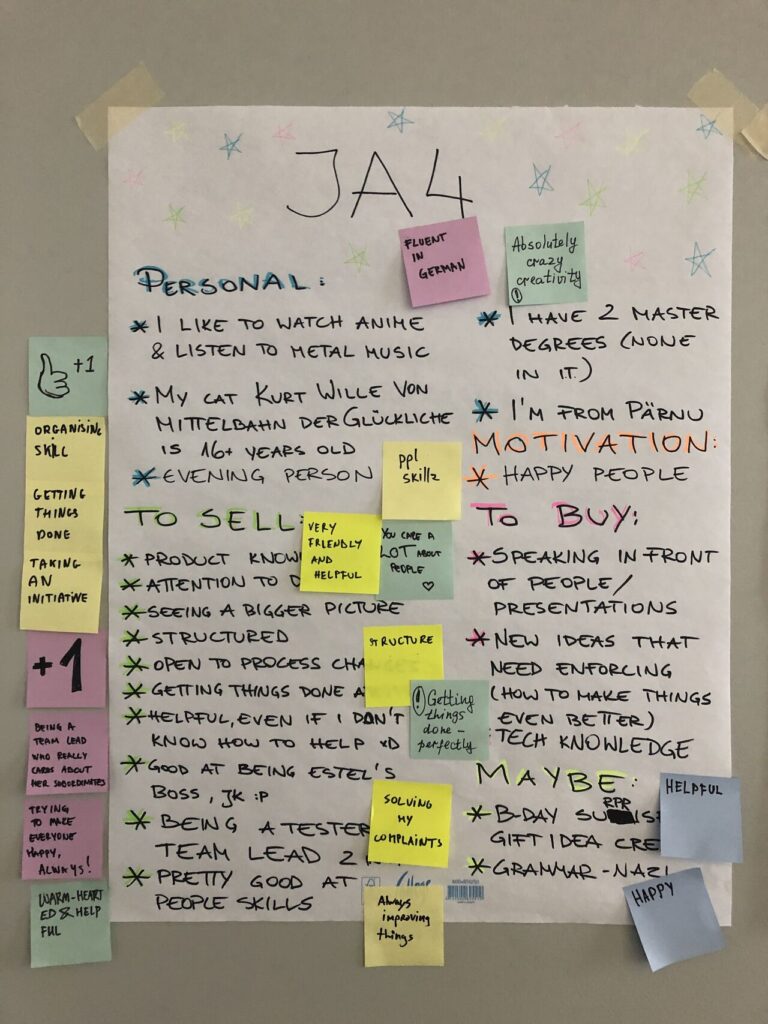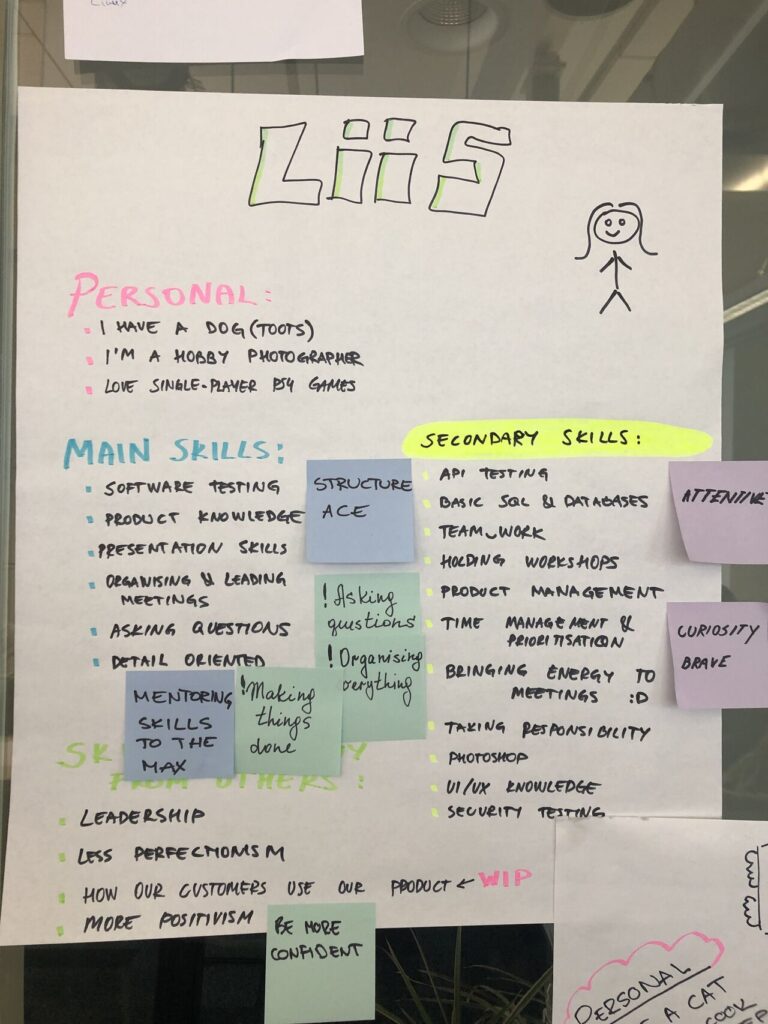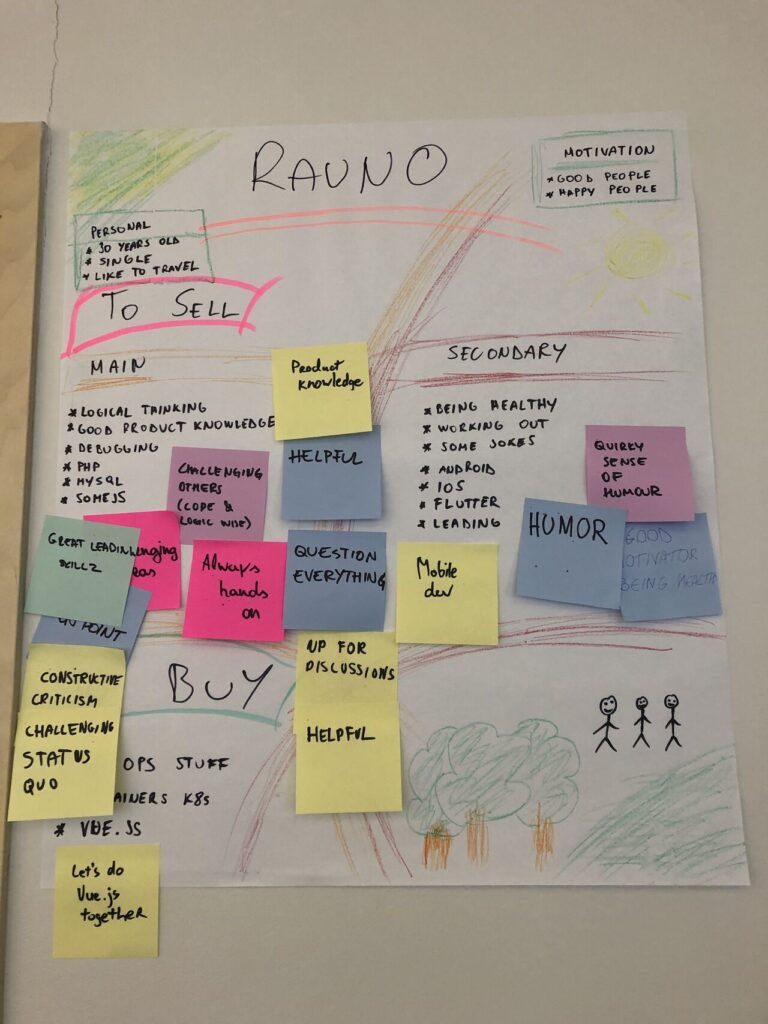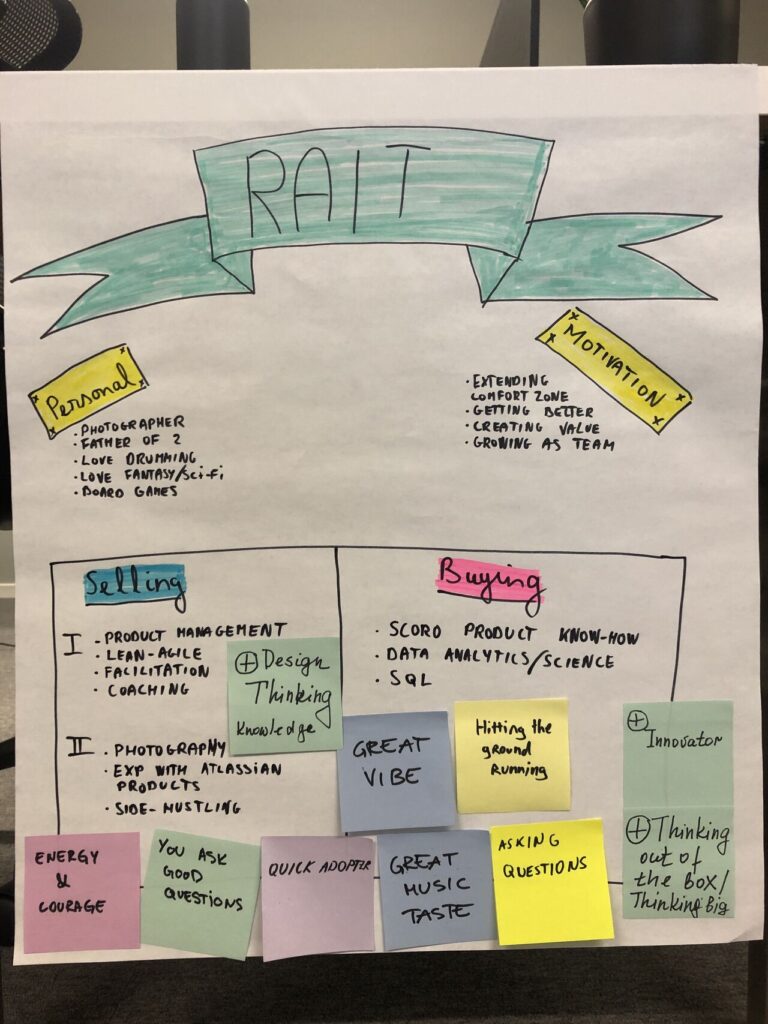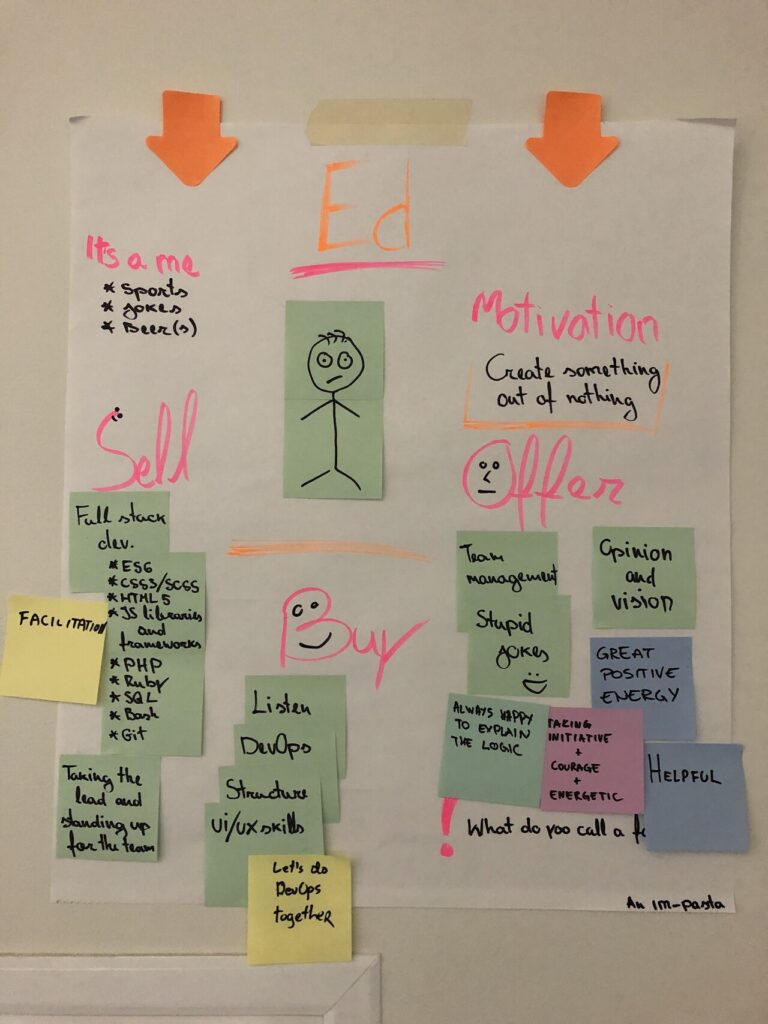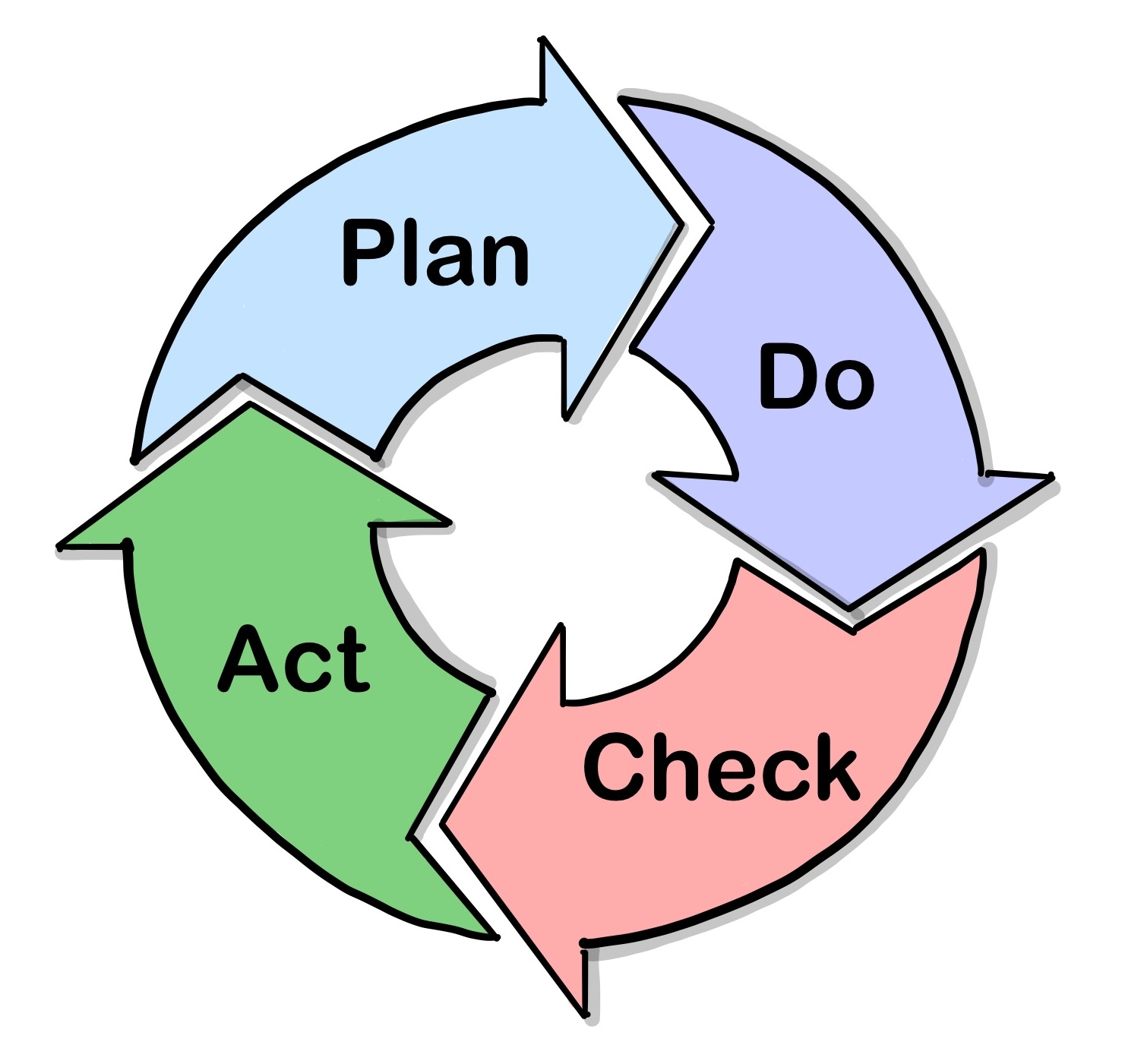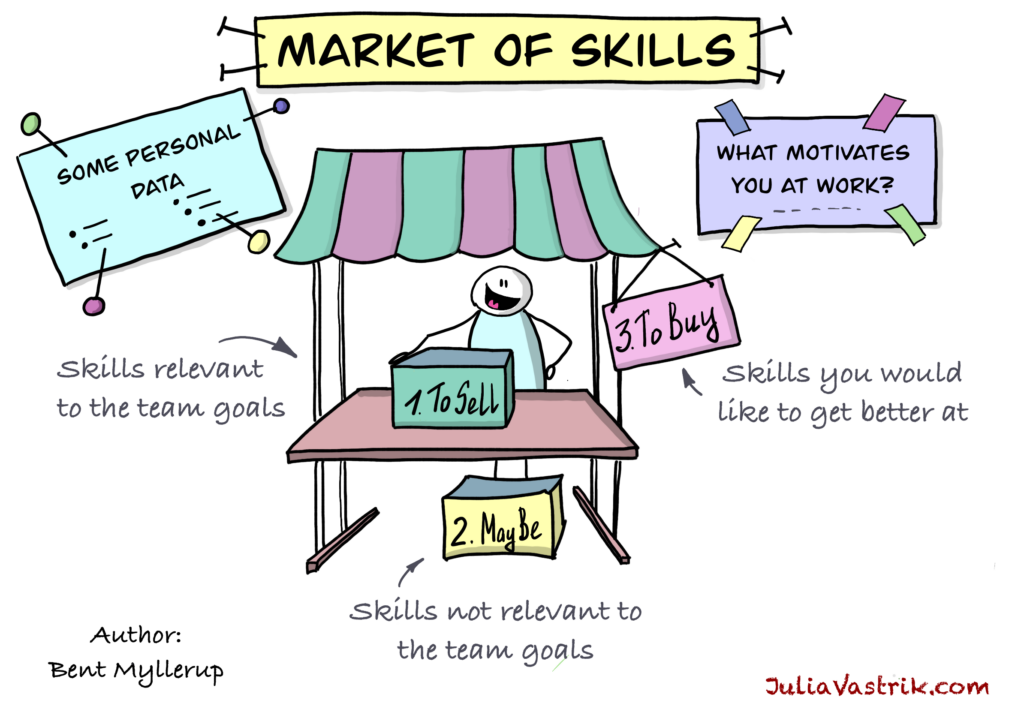
Market Of Skills exercise is a great tool for creating awareness of knowledge and skills available within the team as well as for providing opportunities to appreciate other team members’ contributions and abilities and to give positive feedback.
It has been introduced by Lyssa Adkins in her seminal book “Coaching Agile Teams” with a reference to Bent Myllerup, as the author of this exercise. And I was lucky enough to learn it directly from Bent; we practiced it during training, and I just loved this experience. It became one of my favorite exercises, especially for new teams.
Time: up to 2 hours, or even longer, if a team is big. Sometimes feedback parts can take quite a lot of time, so it is better to have some buffer.
Market Of Skills exercise is a good fit for:
- New teams and teams with new team members, to help people get to know each other
- Teams who work together longer time would benefit from this exercise too, by revealing something they did not know about their teammates and especially the feedback part would be really valuable for such teams.
Why
Market of Skills exercise:
– Creates the team’s awareness of combined skills within the team
– Shows the areas in which team members can support and educate each other
– Makes team members’ competencies visible
– A way to get to know team members better
– Helps to appreciate team members and create warm feelings in the team
– Establishes the foundation for trust in the team
Materials needed:
- Big flipchart sheets of paper, so that it would be enough for all the participants, plus some extra
- Markers, crayons, etc. – as many as you can have, but it is not necessary to provide a separate set for everybody, people will share those available ones, the limitations might even be good for their creativity.
- Post-its
How
Imagine that each team member owns a booth at a special market – Market Of Skills.
Step 1. Team members create posters about what is available in their booth, which have several sections:
First, general information:
- Some personal data (as much as they wish)
- What motivates them at work
And then Skills part:
- To Sell: On the counter -Their skills, abilities and knowledge they have that could directly contribute to achieving the team goals
- May Be: Under the counter – the competencies, skills, and abilities they possess but which may not be relevant to the goal of the team
- To Buy: Which competencies, skills, and abilities would they like to achieve or learn?
Usually, it takes 20-30 minutes, but plan some buffer.
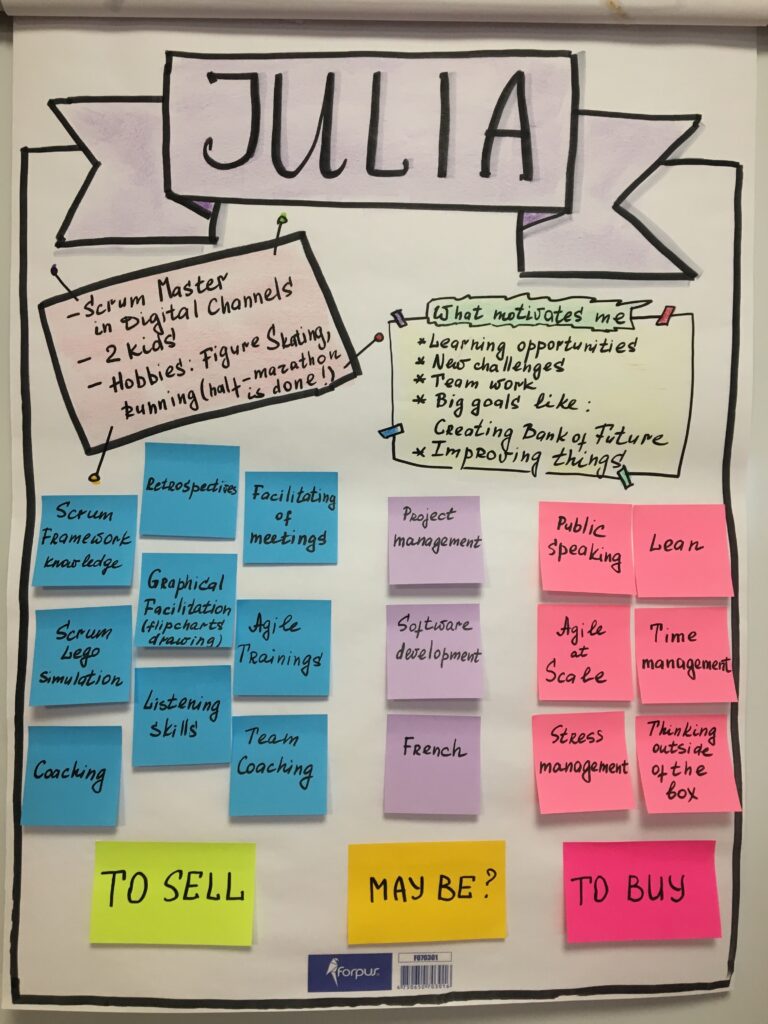
Step 2. One by one, people start presenting their posters. During the presentation, everyone else notes the following (one note on each sticky label):
- The competencies and so on that you are especially glad that this person offers (this could be on green sticky labels).
- Other relevant competencies, skills, and abilities that you know this person possesses but didn’t mention (this could be on red sticky labels).
- How you can help the person to gain the competencies, skills, or abilities the person wants (this could be on yellow sticky labels).
After the presentation, the other team members individually give their feedback and post the sticky labels near the person’s poster. I find this to be the most valuable part of the training, as it creates very warm feelings both in those receiving and getting feedback. If somebody had been skeptical about this exercise in the beginning, at this stage, everybody usually appreciate the exercise.
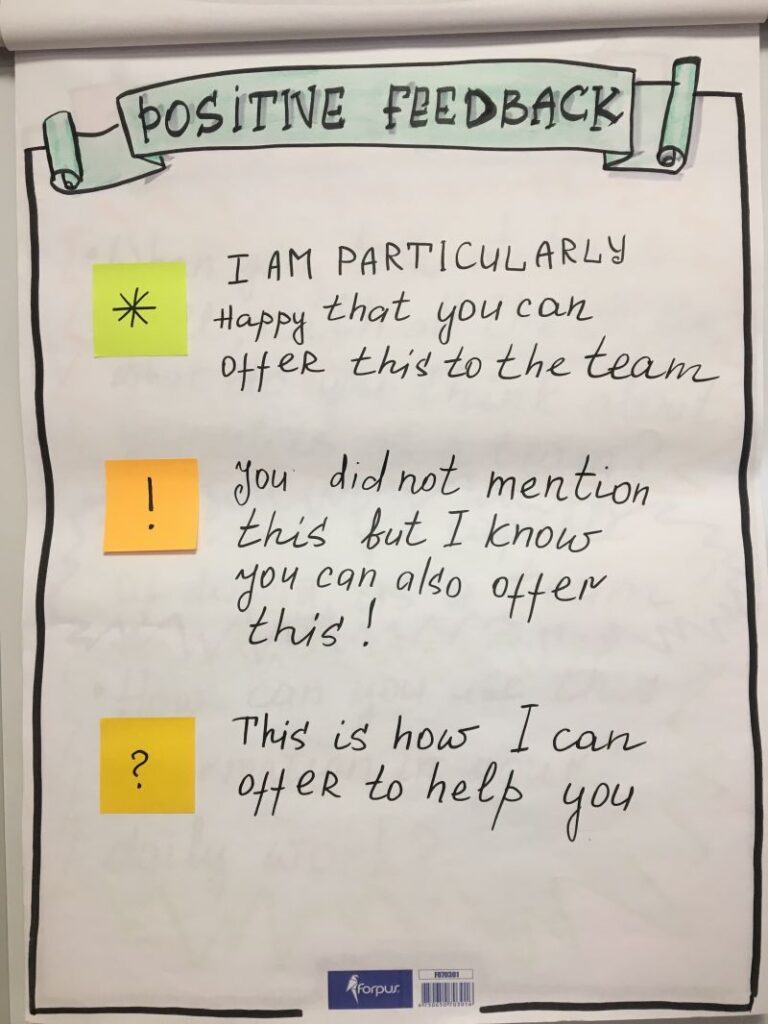
Step 3. And after this, it might be a good idea to reflect on some of those topics:
– When you look at this wall, with all the skills, what do you think about yourselves as a team?
– What are you capable of doing as a team?
– What have you learned about your team members?
– What surprised you?
– What did you notice that we have in common?
– What we can do with this knowledge?
– What strengths do we have as a team?
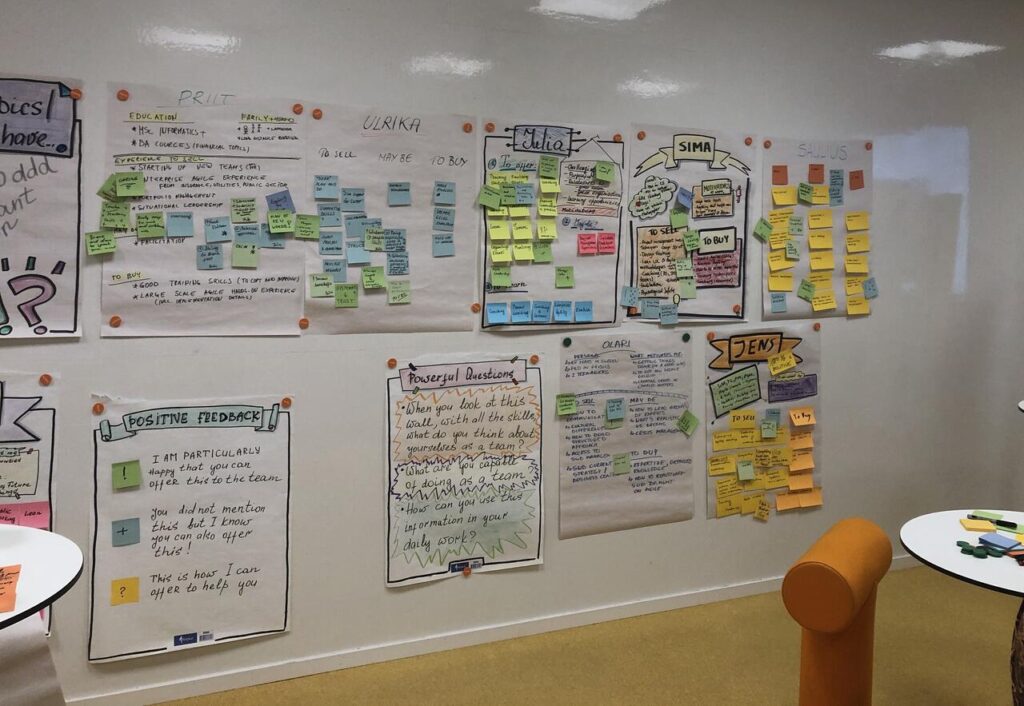
Facilitation tips
- Demonstrate your own Market Of Skill first and make a presentation of yourself
- You can also briefly show Market Of Skill examples of other people, to illustrate that styles might be very different and that having advanced artistic skills is not necessary at all – as many people are not used to creating any kind of drawings in their adult life and it might be scary for some of them
- If you have a co-facilitator, demonstrate providing feedback to each other after the participants finish their flipcharts
- Usually, in the beginning, the participants are less generous with providing positive feedback; later, it goes more naturally, so as a facilitator, provide as much feedback as you can to the several first participants, being a role model in this and encouraging others to do the same.
- Be ready that in the beginning, people might not be very happy to do this “silly stuff” – don’t be discouraged by that! The mood will be very different by the end of the exercise. The people will have very warm feelings about the feedback they received (and provided too!)
- If you explain before why it is vital for team members to get to know each other (for example, as a part of Team Dynamics training), it helps to “justify” using this exercise.
- In the end, if there is some time left, you can also ask people to write down the strengths of the team and put them on a special poster, which you can fix on the team room wall:
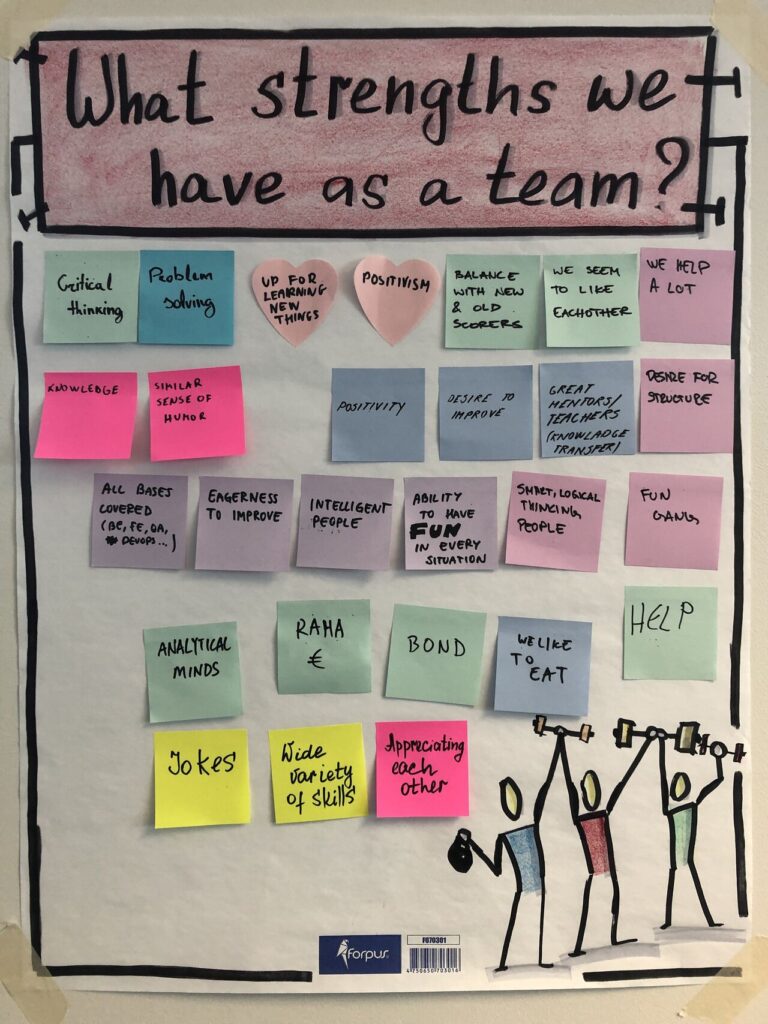
Some examples:
